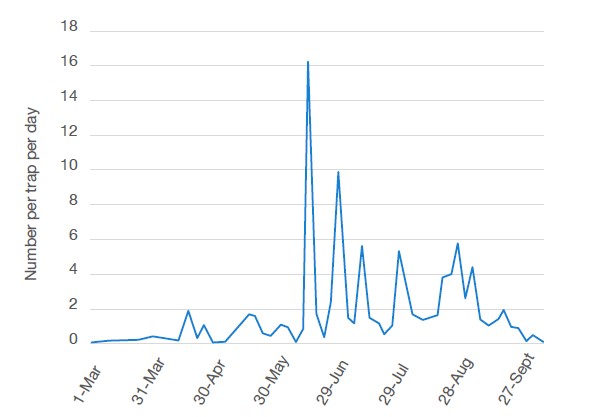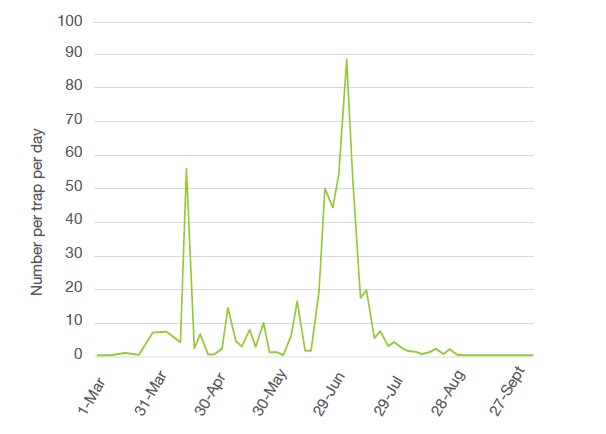Please click here to access the main AHDB website and other sectors.
- Home
- Knowledge library
- Pest insects in brassica crops: beetles
Pest insects in brassica crops: beetles
Find out about the types of beetle that infest brassica crops, the damage they can cause and the chemical-free measures you can take to limit infestation.
The most important pest beetles are flea beetles (several species), pollen beetles (Meligethes spp.) and the cabbage stem weevil (Ceutorhynchus quadridens). Both pollen beetles and cabbage stem weevils are occasional pests.
Life cycles
All of the above species complete one generation a year and overwinter as adults in field margins and other vegetation. Adult beetles become active in the spring as the temperature rises, then mate and lay eggs. The larval and pupal stages follow quite rapidly, and a new generation of adults emerges, usually feeding for a while before hibernating.
Damage
Flea beetles
Adult flea beetles can cause considerable damage by feeding on the foliage of newly emerged drilled crops like swede. If they are not controlled, they can destroy the crop completely. Feeding by flea beetles also causes cosmetic damage to more mature crops such as radish (for bunching), rocket and leafy brassicas. Older research suggests that the period of greatest activity is mid-April to late May. More recently, however, damage appears to have occurred over a much longer period.

Number of adult flea beetles per trap per day at Wellesbourne in 2016
Pollen beetles
Adult pollen beetles are occasional pests of cauliflower and broccoli. They cause damage by feeding on the curds or florets. This type of damage usually occurs in mid-summer when new adults emerge from oilseed rape crops and move into other areas to feed. They are also often found in flowers such as sweet peas at this time. These new adults feed for a while before finding a place to hibernate.

Number of adult pollen beetles per trap per day at Wellesbourne in 2016
Cabbage stem weevils
Adult cabbage stem weevils chew the foliage of brassica plants and lay eggs in the holes they make. The larvae then tunnel through leaf veins and stalks, making them brittle. If the larvae move to the main stem in large numbers, they may destroy the plant. Their tunnels can cause cosmetic damage in crops like cauliflower.
Monitoring and forecasting
Like the cabbage root fly, all the species mentioned above can be monitored with yellow sticky traps or yellow water traps. Migration of newly emerged pollen beetle adults (from oilseed rape fields to feeding sites such as broccoli/cauliflower crops) can be predicted using a computer program developed with funding from Defra and AHDB. The output from this program is currently available as part of the AHDB Pest Bulletin.
Non-chemical control methods
There are no established methods for reducing the overall population. In the case of pollen beetles, close proximity to oilseed rape crops is likely to increase the risk of damage. Fine mesh netting used to exclude cabbage root fly will also exclude adult beetles, provided the mesh size is small enough. However, it’s likely that flea beetles will still feed on the foliage through the netting where it touches the crop.
Useful links
Read about pest insects in brassica crops: fly pests
Read about pest insects in brassica crops: caterpillars
Read about pest insects in brassica crops: aphids
Read about pest insects in brassica crops: cabbage whitefly
Read about whole crop IPM strategy for pest insects in brassica crops
Read the Brassica Crop Walkers' Guide
If you would like to order a hard copy of the Brassica Crop Walkers' Guide, please contact publications@ahdb.org.uk or call 0247 799 0069.
Topics:
Sectors:
Tags:


